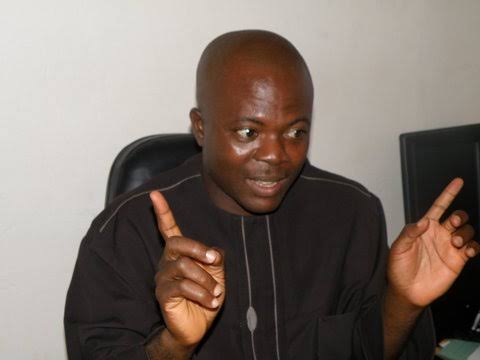By Val. Obienyem
Yesterday, I was with Prof. Fr. Boniface Obiefuna, his good friend Rev. Fr. Dr. Cosmas Ebebe, and another colleague of his from CIWA. During our discussion, I asked why some well-educated Catholics, including those who have attained the rank of professor, would leave the Catholic Church. Given their academic background, they should be capable of conducting comparative studies and recognizing the privilege of being part of the Church founded by Christ. Please do not dispute this unless you can name another founder.
I made a distinction between professors and undergraduates, noting that undergraduates might have wings so weak for theological flight. Prof. Obiefuna clarified that the individuals we mentioned actually left the Church while they were undergraduates. We then discussed the beauty of the Catholic Church. He shared a story about the late Bishop Ochiagha meeting an Anglican archbishop who was using the Vatican library and had already visited it four times by that time. For what? A topic for another day.
The beauty of the Catholic Church shines brightly today on the feast of Corpus Christi. Whenever it is celebrated, I remember our old formator, Rev. Fr. Prof. Panteleon Umechukwu. When he celebrated Mass in Latin, upon receiving communion, he would say: “Corpus et sanguine Christi custodiat me in vitam aeternam” (May the body and blood of Christ lead me to eternal life). This all boils down to the Real Presence, which is what we celebrate today.
I attended the 5:30 AM Mass at St. Joseph the Worker because I was scheduled to join Profs. Chinyere Stella Okunna and Patrick Obi in representing Mr. Peter Obi at the thanksgiving service for the outgoing VC of Nnamdi Azikiwe University, Prof. Charles Esimone. The priest who celebrated the mass, Fr. Patrick Ifewulu, is thoughtful and deeply cares about the spiritual well-being of his congregation. Over the years, I’ve noticed that like St. Augustine of Hippo, he recounts the past with regret but expresses hope that our lives will be fulfilled by the beatific vision—our characters “ga na adaba na anya ya.” Surprisingly, despite the richness of his sermon, he did not delve deeply into the doctrine of real presence, which is a cardinal teaching of the Catholic Church.
Certainly! Catholics affirm the doctrine of real presence, holding that the authority bestowed upon the apostles for consecration has been passed down to Catholic priests through apostolic succession. St. Irenaeus of Lyon, in his seminal work “Against Heresies” (Adversus Haereses), written around 180 AD, meticulously documented the lineage of Popes up to his era. He played a significant role in establishing the apostolic succession of the bishops of Rome, tracing it back to St. Peter and continuing with his successor, St. Linus.
Looking back at history, we find that the doctrine of the Real Presence of Christ in the Eucharist was articulated and affirmed by numerous early Church councils. However, it was most definitively and formally defined during the Fourth Lateran Council in 1215. Convened by Pope Innocent III, this council explicitly declared the doctrine of transubstantiation, explaining how the bread and wine used in the Eucharist transform into the actual body and blood of Christ while retaining their external appearances.
It was Pope Urban IV that through the papal bull “Transiturus de hoc mundo” of September 8, 1264, that officially established the feast of Corpus Christi as a universal celebration within the Catholic Church. This bull mandated the annual observance of Corpus Christi on the Thursday after Trinity Sunday, affirming the belief in the real presence of the body and blood of Christ in the Eucharist.
The Protestant Reformation, which gave rise to various denominations like Lutheran, Calvinist, and Anglican, occurred in the 16th century. These Protestant denominations hold differing beliefs regarding the Real Presence of Christ in the Eucharist. Lutherans, for instance, affirm the doctrine of the Real Presence, which they term “sacramental union” or “consubstantiation.” They believe that the body and blood of Christ are truly present “in, with, and under” the bread and wine, signifying genuine presence while maintaining the substance of the bread and wine unchanged.
Anglicans hold diverse beliefs regarding the Real Presence. While the Thirty-Nine Articles, the official statement of faith in Anglicanism, do not prescribe a particular doctrine like transubstantiation, they allow for a belief in the Real Presence. Some Anglicans embrace a concept of Real Presence, often termed as a “spiritual presence,” while others may adhere to a more symbolic interpretation.
Calvinists, followers of John Calvin, uphold a belief in the “real spiritual presence” of Christ in the Eucharist. They affirm that Christ is genuinely present by the Holy Spirit, and believers spiritually receive Christ’s body and blood through faith. However, they do not subscribe to the idea that the bread and wine undergo a change in substance.
In Methodist tradition, there is a belief in the Real Presence of Christ in the Eucharist, commonly referred to as a “spiritual presence.” Methodists emphasize that Christ is genuinely present to the faithful in a spiritual sense, rather than through a physical transformation of the elements.
Regarding other emerging churches in Nigeria like the Redeemed, Deeper Life, and Winners among others, it is often challenging to ascertain their specific beliefs as they tend to align with the preferences of their founders. What about Odumeje’s Church? Who can tell us their own belief?
In the Latin Rite of the Catholic Church, the use of unleavened bread in the Eucharist is standard, reflecting what Christ used during the Last Supper. However, some Eastern Catholic Churches use leavened bread, symbolizing the risen Christ. This difference in practice highlights the diversity within the Catholic Church while maintaining unity in doctrine and communion with the Pope.
As I was about to conclude, Prof. Okunna called to remind me about representing H.E. Therefore, I will stop here. This reminds me that, like Newton’s First Law of Motion, a pen in motion does not stop unless compelled by an external force.




